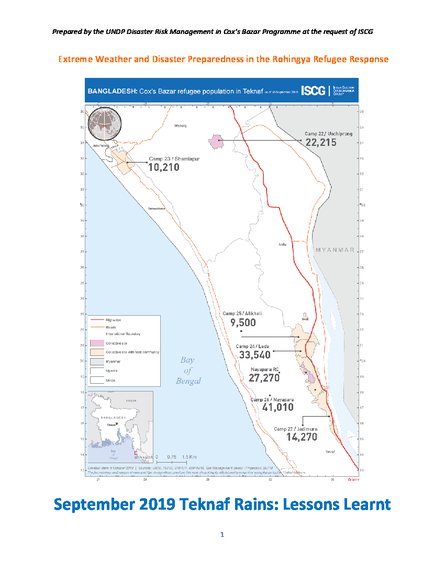
The normal monsoon season in Bangladesh, which peaks between June and August, will see 20-25 days of rain per month, with an average precipitation of between 400-600 mm a month nationally. However, rain fall patterns can be inconsistent and single day totals of over 200 mm are not unheard of. This climatic context has considerable impact on the Rohingya refugee response operation in Cox’s Bazar; in 2018, a total of 12,292 households were affected by landslides and erosion, flash flood, storms and lightning.
Despite massive efforts to reduce risks during the 2018/2019 dry winter season, the equivalent number in 2019, is 18,378 households as of early October. 2019 has also seen 10 fatalities within the camp related to natural hazards and fire, while four people from the host district population have died due to landslides.
To manage the risks related to the monsoon season regular rains and high-intensity events therein, the humanitarian actors in Cox’s Bazar have formulated a Monsoon Response Plan, last updated 10 June 2019.
The present brief covers events, lessons learnt and recommendations based on humanitarian response to the 9 – 14 September 2019 monsoon heavy rainfall incident in Teknaf upazila, Cox’s Bazar.
